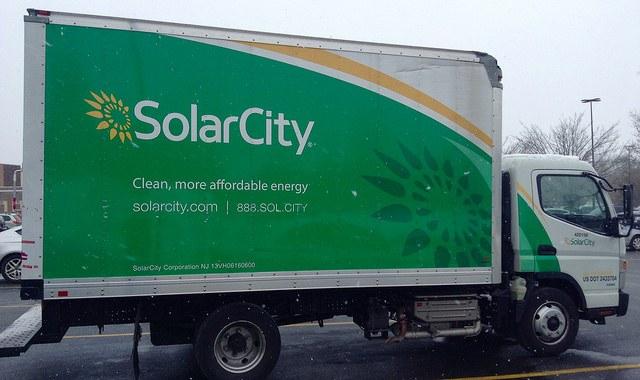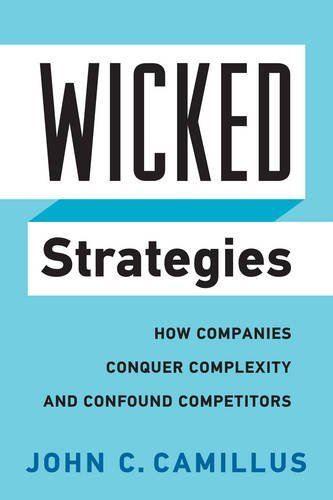The ‘Why’ Behind MGM Resorts' Women’s Leadership Conference


By Phyllis A. James
MGM Resorts International is committed to helping even the playing field for women in the workplace.
In 2007, our nonprofit organization MGM Resorts Foundation partnered with Las Vegas diversity and community organizations to create an event that has evolved into our annual Women’s Leadership Conference. The idea behind the conference is to provide women and men attendees from all walks of life with the developmental tools they need to advance personally and professionally. The 10th annual Women’s Leadership Conference will be held August 8 and 9 at MGM Grand Las Vegas to an already sold-out audience of 1,000-plus.
During the past decade, the conference – or WLC – has grown in size, scope and reputation. Through dynamic programming and acclaimed speakers, WLC has become a premier event among women’s conferences in our nation.
The past two decades have witnessed a slow, steady but determined string of advancements in societal gender equality. So why, you may wonder, is a conference like WLC needed in 2016?
Be empowered to learn, live and lead at #WLC2016 @MGMGrand August 8 & 9! https://t.co/7n0LhFL252 pic.twitter.com/3wzJSbFHY0
— WomensLeadershipConf (@WLCLV) June 20, 2016
Today, more women than ever before are the family’s main breadwinner. But not all of the rules – and cultural attitudes – that govern our workplaces have caught up with this reality. Too many of the opportunities that our mothers and grandmothers fought for are left unrealized in 2016. Although they hold almost 52 percent of all professional-level jobs, American women lag significantly behind men when it comes to the areas of representation and pay in leadership positions.
With grit and resolve, the fight to overcome discrimination and shatter glass ceilings continues in our country. As a new generation of women and girls continues to reach for new heights, they stand on the shoulders of all those who have come before and carry forward their legacy of proud achievement. This increasing participation of women in our workforce has demonstrated something we all know to be true: When women succeed, America succeeds. Events like WLC present an opportunity to give new meaning to the idea that we are all created equal, and should widen the circle of opportunity for women and girls across our country.
The theme for this year’s conference is, “Women Inspiring Women.” Through WLC, we hope to spotlight the stories and experiences of successful women leaders as guides and role models for other women, and provide opportunities for women to sharpen their leadership skills in service to themselves, their families, their workplaces, and their communities. We’ll feature inspiring speakers, such as Donna Brazile, the first African American woman to serve as campaign manager for a major party presidential campaign, and Adrianne Haslet, a survivor of the Boston Marathon bombing.
Each year, the proceeds from the conference, after costs, are donated to a local nonprofit organization that is devoted to the welfare and development of women and girls in the Las Vegas community.
WLC is a signature program of the MGM Resorts Foundation. We view it as an opportunity to further our commitment to advancing societal gender equality while enriching our communities and paying it forward. After last year’s conference, the MGM Resorts Foundation donated $30,000 to Southern Nevada Children’s First, an organization that provides support to the homeless and pregnant youth in Las Vegas.
Click here for more information on the 10th annual Women’s Leadership Conference.
Phyllis A. James is Executive Vice President, Chief Diversity Officer and Chief Responsibility Officer for MGM Resorts International.
Tesla Finalizes $2.6 Billion Acquisition of SolarCity


On Sunday, high-end electric vehicle manufacturer Tesla Motors announced the final terms of its acquisition of SolarCity.
In a deal that will cost Tesla approximately $2.6 billion, SolarCity shareholders will receive 0.11 shares of Tesla stock for each share of the San Mateo-based solar power systems provider. That value equates to approximately $25.80 a share based on Tesla’s stock price at last Friday’s closing.
Some investors aren't sure that this new entity can actually become profitable. And this reflected in the markets. Shares of Tesla and SolarCity initially dropped after the announcement, but have since climbed upward as investors appeared to become more comfortable with the acquisition.
The acquisition, if approved by the shareholders of both companies, would create a clean-energy, transportation and energy-storage company with a unique yet untested business model.
First announced in June, this deal was applauded by many within the clean technology field and panned by many Wall Street analysts. Forbes, for example, described the deal as Tesla shareholders offering a “bailout” for SolarCity’s investors.
But a Tesla blog post announcing the deal on Monday infers that Wall Street should actually welcome this deal. Tesla’s executives expect the deal to save the newly-combined company an estimated $150 million a year in “cost synergies” after the transaction closes. With a bevy of clean technologies under its roof, Tesla also expects to save potential customers money with more efficient hardware and manufacturing costs.
Furthermore, Tesla argues that its retail network of 190 stores will make this new company’s solar power and energy-storage systems more accessible to the public. Despite its growth over the last several years, solar power is still an unfamiliar technology to many consumers (despite the constant telemarketing calls you may receive at your home). And many people still have a nebulous understanding of what energy storage is, how it works and how it can benefit them.
Tesla’s extensive reach offers this newly-formed company opportunities available to no other solar installer or battery-storage startup company. Of course, this new set-up will only thrive if Tesla can meet demand.
Typical of most acquisitions, SolarCity established a “go-shop” provision. This allows SolarCity and its officers to solicit or entertain offers from other firms interested in acquiring the company. SolarCity has also agreed to pay a $78 million termination fee in the event the merger is not finalized by mid-April 2017.
Meanwhile, Elon Musk -- who is CEO of Tesla and chairs SolarCity’s board of directors -- recused himself of voting on the merger.
This new company will be a brave new world for Musk. The future is uncertain for employees at SolarCity and Tesla as well due to what the Los Angeles Times describes as an "audacious" risk. And the Wall Street Journal assessed this deal as a gamble for what will be the employer for 30,000 employees -- that is, if it even goes through.
Image credit: Mike Mozart/Flickr
Report: EPA Isn't Properly Testing the Impact of Pesticides


It sounds like basic chemistry 101. Chemicals, when combined, can be more dangerous than alone. Yet, according to a new report from the Center for Biological Diversity (CDB), the U.S. Environmental Protection Agency has failed to properly test chemical mixtures in pesticides for years, putting all of us at risk.
The report, entitled Toxic Concoctions, analyzed patent applications for pesticide products. Researchers found that numerous approved chemicals have not been tested for how they interact when in chemical cocktails – they've only been examined individually. And that's a huge problem.
“It’s alarming to see just how common it’s been for the EPA to ignore how these chemical mixtures might endanger the health of our environment,” said Nathan Donley, a scientist with the CBD and author of the report, in a press statement. “It’s pretty clear that chemical companies knew about these potential dangers, but the EPA never bothered to demand this information from them or dig a little deeper to find it for themselves.”
The key problem is that when two or more chemicals interact, this interaction can enhance their toxic effects, raising the level of exposure above safe levels. Because these synergies were not properly tested, it is possible that countless farmers, laborers and perhaps even consumers have been exposed to unsafe, dangerous chemicals.
So, how did this happen? It is part of a larger problem with governance in the agricultural sector -- which, due to consolidation, is largely under the control of just a few large food and chemical corporations. In particular, two big agricultural seed and chemical fertilizer/pesticide companies Monsanto and Syngenta, hold an enormous amount of power. These companies spend millions lobbying to push forward laws that both promote the use of chemical-intensive agriculture, and restrict the power of oversight agencies like the EPA to regulate them. In fact, they're trying to do this right now with a multimillion-dollar effort to shape Congress's GMO-labeling bill in their favor.
The impacts are potentially huge. Just a few weeks ago, we reported on the growing evidence that there is a massive global die-off of various insects, with evidence pointing to a strong connection to chemicals being one of the causes. Cancer rates are on the rise in developing countries where pesticide and herbicide use is growing.
The scary part is that the true impact of chemicals in our environment is not something that can be easily determined. Cancer can take years to emerge, and the complex biological relationships we find in ecosystems around the world can make connecting a single chemical concoction to a biological impact nearly impossible. It is under this veil that the chemical industry, focused on short-term profits at the cost of nature, has lobbied against oversight of these products and created a potential global crisis.
“The EPA has turned a blind eye for far too long to the reality that pesticide blends can have dangerous synergistic effects,” Donley said. “Now that we know about all the data that are out there, the EPA must take action to ensure that wildlife and the environment are protected from these chemical cocktails.”
It is time to push, and empower, the EPA to fully test all chemicals, and take a new approach to deciding what chemicals to allow into our environment – only those that can be proven, without any doubt, to not have any detrimental environmental impact. It is time to stop playing games with our environment, and our health.
Image credit: Zeynel Cebeci via Wikimedia Commons
Philippines Investigates Carbon Majors’ Role in Climate Change


In a move the governments of other developing countries will watch closely, the Philippines issued a complaint directed at 47 of the world’s largest companies last week.
The country’s Commission on Human Rights (CHR) accuses these companies of emitting greenhouse gases to the extent that they have violated the human rights of millions of people living in this archipelago.
To that end, the CHR gave these “carbon majors,” which include oil, cement and mining companies, until mid-September to answer questions related to their role in contributing to the natural disasters that the Philippines insist resulted from climate change.
Co-signing the CHR’s petition were over a dozen NGOs based in the Philippines, including Dakila, a social activist organization; Mother Earth Foundation, an environmental justice group; and a coalition of nonprofits called the Asian People’s Movement on Debt and Development. Leading the charge is Greenpeace’s Philippines chapter.
The CHR’s 60-page document demands accountability and answers from some of the world’s oldest and largest multinationals, as well as state-owned firms. And it's backed up by copious media reports and studies by international organizations and NGOs. Time magazine, for example, described this country of 98.4 million as “ground zero for climate disaster.” The World Bank designated the Southeast Asian expanse of 7,100 islands as one of the world’s most “vulnerable” countries in terms of susceptibility to natural disasters attributed to climate change.
Companies named in CHR’s complaint could be best described as a “who’s who” of carbon emitters. CHR culled data estimating the companies that have released the most of greenhouse gases into the earth’s atmosphere since 1751. Based on what it says are the world’s largest contributors to climate change, the agency demands that these companies be held accountable for violations, and “threats of violations,” on several fronts. The impacts on society, the complaint’s authors say, include Filipinos’ rights to life, health, food, water, sanitation, housing and self-determination.
Chevron and ExxonMobil are deemed to be the largest violators, but the list spans companies across the globe. Shell, Total, Rio Tinto, Respol, EnCana, Yukos, Cemex and the coal producer Massey Energy (which was acquired by Alpha Natural Resources) are among the firms from which CHR and its partner organizations are demanding answers.
This document certainly makes for superb political theater. Reading like a manifesto that blames large companies for the Philippines' -- and the planet’s -- ills, it will arouse sympathies from citizens who see the world’s largest polluters as Goliath in contrast to to the developing countries’ role as David in discussions over climate change and sustainable development.
Perusing through the complaint certainly brings up images of Typhoon Yolanda, one of the worst tropical storms ever recorded in human history. The November 2013 disaster killed at least 6,300 people in the Philippines, severely affected almost 1.5 million families. And it left behind an estimated $3 billion in damage.
At issue, however, is how far this complaint can go. As the Guardian reported, only 10 of the 47 companies mentioned in the complaint have offices within the Philippines. The odds that any company based abroad would participate in such a sideshow are almost nil. And the possibility is even slimmer that any foreign government would cooperate if the Philippines’ government went as far as starting extradition proceedings.
This announcement, however, could help maintain Philippines President Rodrigo Duterte’s popularity, buoyed in part by an international tribunal’s decision on his nation’s claims to the South China Sea. The Philippines’ new leader, who took office just over a month ago, has long kept citizens -- and international observers -- on their toes with his well-documented series of controversial statements.
Duterte’s pattern of head-scratching comments extends to climate change. Days after declaring that the Philippines would not honor commitments to the Paris Agreement and other international climate change accords, he insisted last week that climate change would be a “top priority” for his administration.
How far the Philippines can take take this complaint also rests on the reputation of its own government. Long notorious for systemic corruption, Transparency International ranked the Philippines with a low score on its annual index. The country shares its place on the most recent list with countries such as Armenia, Mali and Mexico. It's slightly behind Peru and Morocco and barely ahead of Bolivia when it comes to how its people and business community view the national government.
The difficulty in getting ahead in the Philippines partly explains why many of its citizens have left the country and now comprise one of the largest expatriate populations in the world. Just how exactly Filipinos would benefit from this petition, potential litigation and any compensation is a fair question to ask.
Nevertheless, this petition is a signal that the world’s largest companies -- especially those that prove obstinate when it comes to climate change science -- are on notice. Developing countries often view climate change as a problem generated by richer nations that created a mess for which they have refused to take responsibility. These same countries want to modernize their economies in the way that nations including the U.S., Japan and European powers were able to over the past two centuries. But, if such options are limited due to GHG restrictions, the logic follows that the energy and extractive industries can write the checks needed to remediate the environment, in turn helping to build a better life for the people in countries that are ravaged by climate change but lack the resources needed for prevention and mitigation.
Image credit: Asian Development Bank/Flickr
Chernobyl May Become Home to the World's Biggest Solar Park


Believe it or not, the sun still shines on Chernobyl. Thirty years after one of the worst nuclear disasters in history, the Ukrainian government aims to harness the sun for solar energy to make the once-flourishing but now-unlivable area useful again.
With no humans able to inhabit the desolate land loaded with dangerous radiation, a solar farm is the perfect way to make use of an otherwise useless block of 1,600 square miles. The energy it would create, 4 gigawatts, would unmistakably make Chernobyl the largest solar power plant in the world, the Independent, a U.K. newspaper, reported on Monday.
It is still unclear whether the installation process would be possible given the remaining radiation. But the infrastructure essential for transporting large amounts of energy still exists, as the transmission lines that once served the Chernobyl plant's four main reactors remain in place.
The Ukrainian government is in search of investors willing to develop the new solar plant. Ukraine’s environment minister, Ostap Semerak, said several investment and energy companies — two American firms and four Canadian companies —have expressed interest in the potential project, Bloomberg reported.
The production of such massive amounts of solar energy could be yet another huge step for Ukraine as it continues to seek independence from Russian energy supplies. From 2014 to 2015, Ukraine cut its imports of natural gas from Russia in half, leaning more on Europe to supply the country with its energy.
The government’s implementation of a 1-gigawatt solar target is estimated to cost around $1.1 billion, and Ukrainian developers are planning to experiment by installing 4 megawatts of solar by the end of the year, Bloomberg reported.
Chernobyl is one of two sites — along with the 2011 Fukushima Daiichi nuclear disaster zone — to ever reach the highest level on the International Nuclear Event Scale. Thirty-one people were killed as a direct result of the incident, but a World Health Organization spokesman said the disaster can be related to thousands of cancer cases. The New York Times cited more than 300,000 displacements because of the incident, and the Independent reported that death estimates as a result of the disaster has reached 100,000.
Maybe this will give Chernobyl a chance to rewrite its name, which has long been synonymous with catastrophe.
Photo by Stefan Krasowski/Flickr
Data Science Offers Sustainable Solutions for the Future, Experts Say


By Roslyn Tate
Data science is the practice of turning information into a resource. And it can optimize business operations by simultaneously reducing waste and increasing efficiency for the betterment of both the planet and profits.
For example, UPS, the world’s largest package delivery company, uses data science to calculate the optimal routes for its drivers, reducing the number of miles they travel by the millions. This optimization not only spares the environment unnecessary pollution, but it also saves the company millions on fuel costs and wages.
Data science has evolved by leaps and bounds since UPS began that project in the 1980s, and it will continue to progress in the future. But what are the benefits that data science has yet to deliver?
I gathered a few thoughts from leaders in the field and discovered that data science will advance to aid the planet and improve profits in three ways: ubiquity, precision and insight.
Ubiquity
Craig Mundie, senior advisor at Microsoft, told me: “Data are becoming the new raw material of business,” describing the gathering of information as integral to business operations.
It is not enough to have production facilities, natural resources and labor. Businesses need to have the data necessary to ensure these components are working together optimally. Production must be streamlined through taking into account all relevant data. And that includes everything surrounding production, from design to marketing. They must then be willing to be informed by data again to ensure optimization.
Maximizing the potential of business operations in this way bodes well for the bottom line by preventing waste, which inherently squanders natural resources and creates pollution that the Earth can do without.
Precision
“My interest is not data; it’s the world,” said Hans Rosling, cofounder of the Gapminder Foundation, which supports sustainable global development. Rosling is referring the power of data to encapsulate to a laser focus aspects of reality which are difficult to describe.
To keep with Rosling’s example: The empowerment of women is a cause that organizations around the world are dedicated to. But its inherent challenges and the efficacy of approaches to overcome them are impossible to discern without the data. Information like figures on earning power, literacy rates and access to reproductive healthcare are critical to developing and delivering services.
Similarly, data science helps business owners understand more about who they serve and their own businesses by quantifying aspects that were once unaccounted for. This reveals strengths and weaknesses and brings to life consequences that were previously invisible -- particularly in terms of environmental degradation as a larger, more complete picture of the business and its place in the world.
Insight
“Hiding within these mounds of data is knowledge that could change the life of a patient, or change the world,” said Atul Butte, alluding to data science’s ability to improve research. Butte, the director of the Institute for Computational Health Sciences, is referring to how data science can advance healthcare efforts. By collecting and analyzing mounds of business information, data science reveals patterns and trends that savvy business leaders can take advantage of through product development, improving services and innovating processes.
Lyft, the ride-sharing service company, coordinates shared rides in cities around the world. This business model eases traffic congestion and maximizes gasoline consumption, thereby reducing pollution. And it creates a win-win for consumers, the business and the planet.
Data science is promising for profits and the planet, but it’s the third P in the triple bottom line that proves the trickiest: People. “As business leaders we need to understand that lack of data is not the issue,” Bernard Marr, author of "Big Data," explained.
The biggest challenge to achieving the benefits of data science is alleviating the dearth of skilled labor in the field. The data needed to optimize business is readily available – but we have to catch up workforce with the skills necessary to use it. We need more data scientists who can effectively and widely apply data science practices so that we, as business owners and as inhabitants of Earth, can benefit. To reap the rewards that have already been sown with the growth of data science, businesses will need to invest in their own teams.
As Susan Etlinger of the Altimeter Group says, “Data doesn’t create meaning. Humans do.”
For more on what industry experts are saying about data science, check out the infographic below:
Roslyn Tate is an editor on the 2U Inc. website. A recent Goddard College MFA she enjoys helping people achieve their goals through academics and art. 2U partners with leading colleges and universities to offer online master's degree programs to students around the world.
Image credit: Pixabay
Graphic was created by the author and previously posted on Sisense.com.
Rock The Green: Big Systems


This article is part of a series of interviews with companies supporting the Rock the Green sustainability festival. Follow along here.
Welcome to the second of our interviews with companies that are supporting the upcoming Rock the Green sustainability festival in Milwaukee on Sept. 17. We're asking companies to talk about their own sustainability stories, as well as to explain why they're supporting the event -- one of the most sustainable festivals around.
This time we chatted with Joe Jones, president of Big Systems, a reseller of wide-format and 3-D printers, who donated the signage and banners for Rock The Green.
TriplePundit: What's your company's definition of sustainability, and why is it important to you?
Joe Jones, Big Systems: Big Systems’ sustainability mission is to work with our clients to create vibrant brand images, markings and signage tactics that minimize the impact on the environment via recycling initiatives and the use of non hazardous media / sign and ink materials.
3p: What are the most important sustainability issues your company deals with?
JJ: Lowering the carbon footprint and utilizing low emitting (VOC) materials
3p: Sustainable thinking is no longer just a "nice to have." It's increasingly seen as a competitive advantage. Tell us how sustainable thinking is helping move your company forward.
JJ: By partnering with HP, Inc. to utilize HP Latex print technologies that use water-based inks and recyclable print materials.
3p: Rock the Green, the concert, is all about going for zero waste. How has your company reduced waste across your operations? Has it paid off for you financially?
JJ: We have changed our product mix to add new products with a lower carbon footprint. We first partnered with RTG in 2011. Since that time HP Latex equipment, matched print medias and inks have become are largest sellers in terms of an integrated print solution. Our business partner, HP, is very proud to have assisted with RTG.
3p: Surveys show that employees are happier and more productive when they're engaged with a company's sustainability strategies. How do you engage your staff to implement your sustainability plans?
JJ: We discuss our sustainability plans via monthly meetings and during new product reviews with our suppliers. We have received excellent sustainability guidance and collaboration with HP. Our employees also volunteered at the last RTG event.
3p: In a nutshell, how will you be "rocking the green" in the coming five years?
JJ: Through the growth of environmentally-friendly print and rapid prototyping technologies and future participation in RTG!
How Social Responsibility Can Help Companies Disrupt


By John Camillus
In the roiling cauldron that is the business environment today, a number of mega-forces are responsible for creating wicked problems. Globalization brings complexity and uncertainty, while innovation creates new and unfamiliar realities, unprecedented situations, and potential conflict. And, when the two interact, the result can be disruptive technologies.
Research has suggested that disruptive innovations arise from addressing low-end markets or from the creation of entirely new markets. Globalization creates the context in which low-end markets are found and entirely new markets can be conceived. The resulting disruptive innovations and related technologies in turn create the need and the opportunity for new business models.
I have found that a number of specific practices – which I call “Wicked Strategies” – will enable organizations to transmute disruption and chaos into cash flow. One of these practices is to integrate social responsibility into the business model.
A wonderful example of this can be found in Arvind Limited, a global textile manufacturer based in India that reduced the incidence of cotton farmers committing suicide – a tragedy that is all too common in India.
The farmers who were most at risk worked on non-irrigated land, dependent on monsoon rains. They borrowed money to pay for expensive, genetically-modified, pest-resistant seeds, and for fertilizers and pesticides. If successive monsoon rains failed to occur, the farmers were likely to be unable to pay back the money they borrowed, and their land would be forfeited to the moneylenders. With no ability to make an alternative living, farmers and their families often chose suicide to slow death by starvation.
Arvind, a public limited company, which began as a textile manufacturer, has a fourth-generation scion of the founding family as its CEO. Arvind’s reputation for implementing leading management practices has made it the focus of several case studies that are discussed in management schools in India. Every generation of the family has been recognized for its commitment to social responsibility, a commitment that has seen a progression from personal giving, to corporate giving, to professionally managed philanthropic trusts funded by the company, to the current generation’s innovative and surprisingly profitable incorporation of social responsibility into business models implemented by Arvind.
Motivated by their concern for the farmers, and by the company’s and its major customers’ (including Walmart and Patagonia) avowed commitment to environmental and social sustainability, Arvind’s CEO and senior executives brainstormed a possible response to the farmers’ precarious circumstances. The answer they came up with was to teach and enable the farmers to engage in organic cotton farming.
Organic farming, they believed, would get farmers out of the clutches of moneylenders because organic farming is fertilizer- and pesticide-free. Even the cost of cotton seed was significantly reduced because expensive genetically modified seeds were not employed.
Arvind’s project took enormous commitment, a great deal of courage, some creativity, and rigorous planning and analysis. A detailed business plan was developed. The company recruited 130 agronomists and embedded them in the villages to offer scientific counsel tailored to each farmer’s small plot of land and fundamentally change traditional farming practices. Arvind also assumed control of the value chain surrounding the farmers’ activities, eliminating avaricious and exploitative middlemen.
But in order to achieve this splendid success – and this is the point that warrants emphasis – Arvind’s executives truly had to become one with the farmers. The son of the CEO, a Yale-educated, immensely advantaged fifth-generation scion of the founding family, spent time in the villages. The head of Arvind’s agribusiness also lived in the villages. Through these experiences, they understood the hardships and challenges faced by the local population.
It is impossible for anyone unfamiliar with rural India to understand the resolve it takes for someone used to middle-class levels of comfort, let alone a person of privilege, to endure the conditions of living in a poor village. Arvind took their efforts to understand the local population to extreme lengths.
Beyond helping farmers to protect their lives and livelihoods, Arvind also protected the environment, engaged diverse stakeholders, enhanced its competitive position and standing with major international customers, and added significantly to its coffers. The moral is that Arvind’s leadership became one with the farmers and the resulting tale of disruption, increased economic value added, and social benefit is illuminating and inspirational.
It bears mention that the benefit to Arvind soon extended beyond the organic farming project. Responding to the need to rotate crops to keep the soil fertile, Arvind helped the farmers grow and market food crops, alternating with organic cotton. Observing the profitability of food crops and having agronomists in its employ, Arvind moved swiftly to buy fields, grow food crops and initiate a new agribusiness division, which has become an important and growing element of the corporate portfolio of businesses.
Arvind has committed to and replicated the practice of incorporating social responsibility into business models to create disruptions and innovatively enhance both economic value and social benefit. One of these innovative businesses is real estate development and housing for slum dwellers. Another involves teaching tailoring skills and providing safe and comfortable housing to economically and socially disadvantaged young women, to ease Arvind’s entry into the Indian garmenting industry, which is challenged by highly restrictive labor laws. By offering a socially responsible “learn and earn” program that helped a disadvantaged segment of society, Arvind was able to minimize the contingent liabilities that are characteristic of the volatile, global garment industry.
Often, what appears to be a dire threat to an organization can, with a ton of courage and a modicum of creativity, be alchemized into a powerful and generous source of competitive advantage and added economic value. Incorporating social responsibility into the business model is one important avenue whereby this can be achieved.
John C. Camillus is the author of "WICKED STRATEGIES: How Companies Conquer Complexity And Confound Competitors" (Rotman – UTP Publishing), and the Donald R. Beall Professor of Strategic Management at the University of Pittsburgh. He has served as consultant on strategic management to over 100 organizations on four continents, including many Fortune 500 companies.
Unwanted Housewares Become a Lifeline for Big Brothers Big Sisters


Thrifting plays a huge role in reducing items going to landfill; it's a must-do for any creative fashionista; and it helps create jobs ranging from retail clerks to truck drivers. But the reality is that many of us treat our thrift store runs as a year-end task. Not that anything is wrong with that: We are all busy, and as Dec. 31 creeps closer, many of us realize that we should scour through our closets and haul those unwanted items in order to free up space and score that coveted tax deduction.
But what about the people who would benefit more from the cash than the tax write-off? In addition, plenty of nonprofits need to raise funds, and relying on donations or grants is often not a sustainable path to ensuring that critical community development work and social enterprise can continue.
Collected unwanted goods presents an opportunity for nonprofits to raise money. But establishing a retail system requires a massive investment and also poses risks to the nonprofit.
Savers, which has been in business since the 1950s, provides that function for nonprofits. By linking up with Savers, nonprofits don't have to pay for burdensome leases or take on the risk of re-selling items themselves.
To that end, the relationship between the for-profit global thrift retailer Savers and the century-old mentoring organization Big Brothers Big Sisters (BBBS) offers a compelling case study of how such synergy can have a vast multiplying effect across communities. The ties between Savers and BBBS -- which at some chapters has endured for over 40 years – reach beyond fundraising, as these two organizations together have created jobs while building a closed-loop economy from which everyone in the community can benefit.
TriplePundit spoke with Sara Gaugl, Savers’ director of communications, and Louis Garcia, CEO and president of BBBS Puget Sound, to gain insight on how both organizations benefit from their partnership.
Here’s how the Savers’ model works: Local residents, or nonprofits, can bring in unneeded items to a Savers Community Donation Center (sometimes branded as Value Village across the U.S. and Canada) that benefit a local nonprofit partner. Savers in turn pays the nonprofit partner for those items by the pound. The items of higher value are sold in the stores; others are either recycled or shipped to developing countries for resale. Savers employees strive to ensure that nothing goes to a local landfill. So while nonprofits can generate income, Savers invests its profits to pay its internal expenses, hire more workers, and expand and grow as any business would do.
The relationship between Savers and nonprofits vary. A larger organization may have the budget for a crew of truck drivers who can pick up and haul goods across town and then deliver them to a Savers or Value Village location. Other nonprofits are open to the idea, but just do not have the staff or experience to launch such an operation. “With some nonprofits, they don't necessarily have the infrastructure or resources, so they need some guidance,” Gaugl told us. “But we love it when our nonprofit partners have the capacity to establish and manage this revenue generating business on their own.”
The bottom line is that the more logistics a nonprofit can handle, the more revenues they can earn from entering a contract with Savers. That flexibility allows Savers’ operations to help fund 120 nonprofits across the country.Depending on the size of the nonprofit organization and the other fundraising activities they perform, an arrangement with Savers can contribute anywhere from the single digits to as much as 80 to 90 percent of a nonprofit’s budget, Gaugl said.
To that end, Savers enters into a contract and negotiates with each nonprofit. If an organization prefers to minimize its investment in infrastructure and capital expenditure to get going, it receives less money per pound as Savers’ takes on the operational costs. A larger or more experienced operation, such as BBBS, contributes a larger share of the labor, so it receives a higher payout for the goods it collects.
“This is an incredible component of our revenue stream as it brings in dollars that are not restricted in terms of how we spend them,” said Garcia of BBBS Puget Sound, which operates in the Seattle metro area. “After all, we know the best way in which we can use that money as we seek to expand our mentoring programs.”
BBBS Puget Sound has a crew of truck drivers who pick up and drop off bins across the Seattle-Tacoma area. Some bins are the size of a small trailer, as one would see in a supermarket parking lot. Others are smaller, as in less than 100 cubic feet. But as Garcia explained, the retail operations of the organization he leads end there. “What’s great about Savers is that we’re not in the retail business, and we don’t want to be in the retail business,” he told TriplePundit. “The benefit of the partnership is that each day, my fleet of trucks and drivers can go to Savers stores and drop off the products, which is hugely convenient for us.”
This bond between BBBS Puget Sound and Savers goes beyond hauling goods, dropping off goods and cutting checks. Each organization has a history of assisting each other with volunteer projects. For example, Savers’ employees learned that a BBBS conference room used to recruit and train new members was in need of some updating and cosmetic touch-ups. The company ended up sending 30 employees, from managers to clerks, who did everything from cleaning and painting to installing a new projector.
“We saw that they were really excited to see, first-hand, one of the nonprofit partners they work with,” Garcia told us. “And we got to let them know what a difference that the makeover of this room helped with the recruitment of new mentors.”
Furthermore, BBBS has what it calls a “young professional council” that helps it us to recruit more mentors and collect more goods, which of course adds to Savers’ ledger, too. Hence, the economic multiplier: Garcia can hire another truck driver or clerks that help staff some of the organization’s purple-colored donation bins across town. Then there is the value-add that cannot be quantified -- a sense of community, which leads to even more commitment from BBBS volunteers and mentees.
“We often hear from a shopper or supporter of Value Village: ‘I was so happy I put a bag of things I didn’t need into one of your purple bins,’” Garcia said. “It’s neat to know that our mentors are excited to contribute another way. So we take every opportunity to be clear: This is what it means to put something in one of our purple bins, and it’s an incredible feeling.”
Image credits: Big Brothers/Big Sisters Puget Sound
TVI, Inc. d/b/a Value Village and Savers is a for profit commercial fundraiser, accepting donations of secondhand clothing and household goods on behalf of Big Brothers Big Sisters of Puget Sound of Seattle, WA. The required registration is on file with the Secretary of State’s charity program. Additional financial disclosure information is available by calling the Secretary of State at 1‐800‐332‐4483.
Company Execs Stand Up Against North Carolina's Anti-Transgender Law


North Carolina's controversial Public Facilities Privacy and Securities Act, also known as the state's "bathroom bill" or HB2, has garnered significant opposition since it was signed into law by Gov. Pat McCrory in March. The Human Rights Campaign, an LGBT rights advocacy and lobbying organization, is at the forefront of a call for McCrory to repeal the law, which it says creates a hostile environment in schools and workplaces toward those who reserve the right to choose their own gender identity.
And the momentum is growing against the state law. Earlier this month, the National Basketball Association yanked its prestigious 2017 All Star Game out of Charlotte over the legislation. And a growing number of musicians have bowed out of major performances, citing the law as "discriminatory" and an "attempt by people who cannot stand the progress our country has made in recognizing the human rights of all of our citizens."
That last criticism was by Bruce Springsteen, who along with Ringo Starr, Cirque du Soleil and Pearl Jam have refused to play in the state while the law is in force.
But truthfully, as much money as the NBA, Springsteen and other entertainment brings to the state's coffers in tourism and other forms of revenue, they likely have less of the governor's ear than, say, pharmaceutical companies and financial industries.
That's because the healthcare and financial sectors are North Carolina's bread and butter, as is manufacturing, technology, personnel and staffing services. In fact, these days you can pretty much pick an industry and find a little piece of it in North Carolina.
Which presents a unique problem for Gov. McCrory's anti-LGBT bathroom law. Since April, more than 170 CEOs and company representatives from across the country have signed a letter to McCrory calling for a repeal of the legislation. Many are small businesses, but others -- like HP, John Hancock Financial and Jet Blue Airways -- rank high on the list of national corporations.
"The business community, by and large, has consistently communicated to lawmakers at every level that such laws are bad for our employees and bad for business," the executives wrote in their letter, which appears under HRC's letterhead. "This is not a direction in which states move when they are seeking to provide successful, thriving hubs for business and economic development." They also noted that HB2 will make it "far more difficult" for companies across North Carolina to recruit and keep talented workers. It will also make it all the harder to promote tourism, a vibrant industry in the country's southeastern region.
The list of signers on HRC's letter continues to grow, as do protests against the law's enforcement. It will be interesting to see if North Carolina, buffeted by increasing calls for social justice, will change its stance and repeal the law.
Image credit: Flickr/Steve Snodgrass